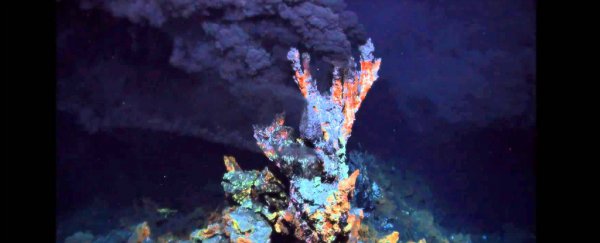Once upon a time, there was just one form of life on Earth - the last universal common ancestor of all cells, or LUCA. At some point, it split into archaea and bacteria, two of the three domains of life on our planet.
At least, that's what we think happened. That single-celled ancestor probably sat in some hydrothermal vent a staggering 3.5 to 3.8 billion years ago, so it's not easy to figure out what it looked like, and why it ever happened to split.
To get some answers, a team of Dutch researchers had to get creative in the lab - and the life form they have now molded is casting doubt on what we think we understand about LUCA.
In an epic feat of molecular biology prowess, the team has reverse-engineered a microbe that shares the features of both a bacterium and an archaeon, and therefore could feasibly have some LUCA-like characteristics.
The thing is, bacteria and archaea both have sturdy cell membranes, made up of fatty molecules called phospholipids. But one of the major differences between the two groups is the molecular structure of their lipids.
"The lipid membranes of both domains are different, composed of phospholipids that are each other's mirror image," says study co-author, molecular biologist Arnold Driessen from the University of Groningen.
Because of this major difference in how the two types of cell membranes hold together, a leading hypothesis about LUCA is that this ancestor of all living things lost its integrity because its own lipid structure was wobbly.
From there on, the molecules would have arranged themselves into two stable types of cell membranes, and voila - bacteria and archaea were born.
But the team's results shoot a major hole in this story.
Since we don't have a nicely preserved LUCA just lying around, the researchers actually built an organism whose cell membrane would be mixed, containing lipids from both bacteria and archaea.
To do this, they used gene editing to transfer the right kinds of lipid-producing enzymes from bacteria and archaea into a garden variety Escherichia coli bacterium. Their hybrid ended up with 30 percent of its phospholipids replaced with ones you'd typically only find in archaeal cell walls.
And contrary to the team's expectations, the E. coli cell membrane did not fall apart at the seams, showing that a fight between lipid molecules was probably not what split LUCA all those billions of years ago.
"This result does not support the hypothesis that a mixed membrane is inherently unstable and could thus have created the lipid divide," says Driessen.
 Left: Wild type E. coli; right: bumpy mixed membrane E. coli (Caforio et al., PNAS, 2018)
Left: Wild type E. coli; right: bumpy mixed membrane E. coli (Caforio et al., PNAS, 2018)
In fact, the new type of E. coli was doing great in its little petri dish habitat. It was more elongated in shape than its regular brethren, and high levels of archeal lipids did make it grow little bumps on the surface. But otherwise, it seemed just fine.
"The robustness of these mixed cells surprised us. We expected more problems keeping them alive," says Driessen.
"After all, what we have engineered does amount to a new life form."
So, evolutionary biologists may need to get back to the drawing board on LUCA - but it sure is a tantalising mystery to solve. After all, even Charles Darwin predicted the existence of this cellular ancestor, back in 1859:
"[P]robably all the organic beings which have ever lived on this Earth have descended from some one primordial form, into which life was first breathed."
We might be able to zoom down to individual lipid molecules these days, but the Origin of Species still remains relevant.
The research has been published in PNAS.
